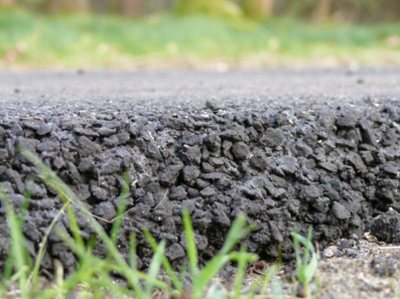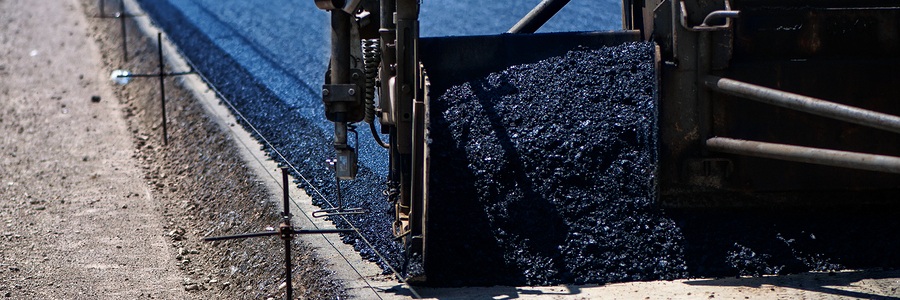9 Easy Facts About A1 Professional Asphalt & Sealing Llc Shown
9 Easy Facts About A1 Professional Asphalt & Sealing Llc Shown
Blog Article
Facts About A1 Professional Asphalt & Sealing Llc Uncovered
Table of ContentsThe 10-Minute Rule for A1 Professional Asphalt & Sealing LlcAbout A1 Professional Asphalt & Sealing LlcHow A1 Professional Asphalt & Sealing Llc can Save You Time, Stress, and Money.Getting My A1 Professional Asphalt & Sealing Llc To WorkSome Of A1 Professional Asphalt & Sealing Llc

The oil in an auto engine is not simply oil. It consists of a range of additives to enhance the car's performance. These consist of polymers, viscosity modifiers, heat stabilizers, additional lubricating substances, and put on additives. The REOB contains all the ingredients that were in the waste oil along with the wear steels from the engine (generally iron and copper).
However, by making several blends utilizing different REOB samples and various asphalt binders, the variations mostly can be averaged out. A number of States supplied examples of well-known REOB composition to TFHRC researchers, who assessed the examples to compare the percentage of included (recognized) REOB to the located (evaluated) quantity. The evaluations revealed a similar portion of included and located REOB.
The smart Trick of A1 Professional Asphalt & Sealing Llc That Nobody is Discussing
None of those States realized that the asphalt they were purchasing had REOB. One State urged its examples had no REOB - https://a1professionalasphaltandsealin.godaddysites.com/f/a1-professional-asphalt-sealing-llc-expert-asphalt-repairs-an.
Of the 1,532 samples evaluated, 12 percent consisted of REOB, and some consisted of substantially high levels of it at 1020 percent. The greatest level was 34 percent in a sample from Texas, which TxDOT had used in a patching compound. This screening also revealed the existence of phosphoric acid in 11 percent of the samples, and 2 percent contained ground tire rubber.
2 years earlier at TRB's annual meeting, the Federal scientists held an REOB workshop and provided the searchings for of their research laboratory analyses to a standing room-only group. Although some agencies do not specifically outlaw REOB, they do impose physical examinations that prevent its useeffectively a ban. asphalt sealcoating in st louis. Others do not outlaw it by specification, yet have arrangements with asphalt suppliers to stay clear of making use of REOB
The Main Principles Of A1 Professional Asphalt & Sealing Llc
A handful do allow REOB, some within specific limitations. Ohio and Texas limit levels to much less than 5 percent of the asphalt. To create a trusted test approach that all States can utilize, the TFHRC researchers set up a round-robin examination plan. The participants are 11 State highway agencies (Illinois, Massachusetts, Minnesota, Mississippi, Montana, North Carolina, Oklahoma, South Carolina, Texas, Vermont, and Wyoming), 2 independent screening labs, the Ministry of Transport in Ontario, Queen's University in Ontario, and an Ontario paving specialist.
In total, the scientists prepared and shipped 720 blends. The participants are evaluating the samples individually making use of the standards offered by the TFHRC scientists. The round-robin screening is nearly completed, and TFHRC is in the process of gathering the results. The output will certainly be a suggested AASHTO examination approach that any State can take on and use (a1 asphalt).
The pavement with REOB, which is located 0.6 mile (1 kilometer) from the sidewalk without REOB, has similar subgrade, traffic thickness, and environment. The sector of Highway655 with 5 to 10 percent REOB showed substantial breaking. In this instance, the existence of REOB was the identified source of breaking at a reduced temperature levels.
A section of examination sidewalk in Minnesota (MN1-4) discovered to have REOB also fractured prematurely. The sidewalk carried you can check here out well for the very first 3 to 4 years, yet then started to break.
A1 Professional Asphalt & Sealing Llc Fundamentals Explained
The examinations were not comprehensive, however they showed that at levels of 6 percent or more, the tensile strength of the asphalt dropped substantially. At a degree of 3.5 percent REOB, the variant in the physical examination approaches was better than the effect of REOB. As a matter of fact, it was hard for researchers to evaluate whether REOB existed.

One binder specification taken into consideration is the difference between the reduced temperature level crucial spec temperature for stiffness (S) in the bending beam rheometer and the bending beam rheometer creep slope (m-value) noted as Tcritical. TC = TC (S) TC (m-value). Assessment of this parameter is still ongoing. Two independent research teams, one from AASHTO and the other from the Asphalt Institute, concluded that more research study is required on the use of REOB in asphalt.
Formerly, all asphalt testing measured engineering homes such as stiffness. These examinations do not show what materials had actually been added to the asphalt.

Some Known Factual Statements About A1 Professional Asphalt & Sealing Llc
These results demonstrate there are weaknesses in the standardized design testing protocols that might be exploited. The producer might have an economic benefit and the item passes all the standard examinations, but the product may not be advantageous to guaranteeing long-lasting performance. To resolve this concern and the development of brand-new asphalt ingredients and extenders, TFHRC is starting a research study program to make use of portable spectroscopic gadgets, x-ray fluorescence spectroscopy, and Fourier transform infrared spectroscopy to make it possible for evaluations to be performed in the area instead of needing to take samples back to the lab.
Report this page